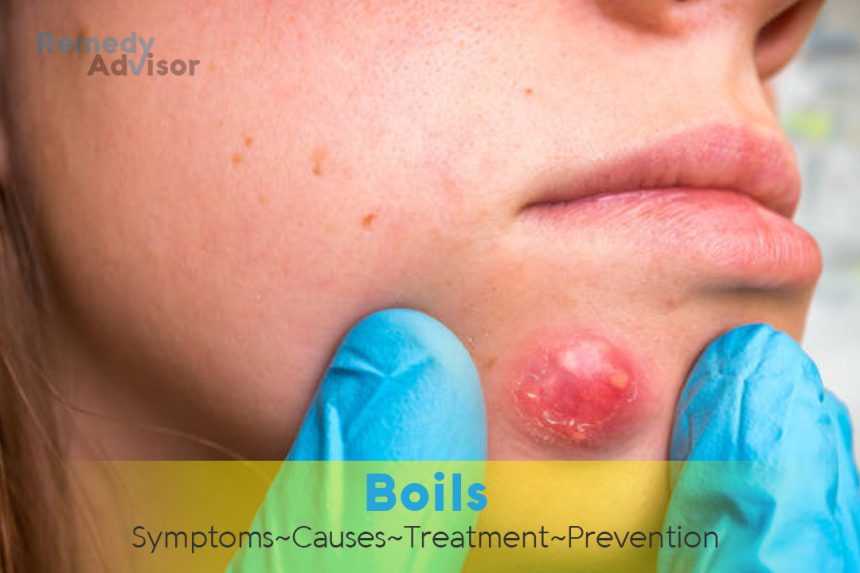What is it
A boil, or furuncle, is an inflamed, painful, pus-filled skin sore. It first forms as a nodule under the skin, then after several days it develops into a raised reddish sore with a white or yellow pus-filled center Because of pus accumulating under the skin, the boil may become more painful. Eventually the pocket of pus rises towards the skin surface and finally bursts and drains. Once this occurs, pain diminishes and healing begins.
Symptoms
- A lump, often pea-size, that forms under the skin on the face, neck, armpits, or buttocks. Red and tender to the touch, the lump fills with white or yellowish pus, forming a head or tip.
- Fever (occasionally).
What causes it
Boils are typically caused by bacteria, usually Staphylococcus that infect the oil gland of hair follicles, typically on the back of the neck, buttocks, groin, and armpits. Once germs proliferate in the gland, infection and inflammation of the skin begins rapidly. The staph germs may enter the body through cuts, scratches, or other skin breaks (and for this reason the bacteria can be spread to family members).
Anyone can get a boil, but some circumstances can predispose people to them. These include diabetes, a suppressed immune system, exposure to certain industrial chemicals, treatment of skin problems with corticosteroids, and poor hygiene.
What if you do nothing
Boils are common and usually minor skin ailments. Most boils will rupture and drain on their own within two weeks. However, if left untreated, a boil can reach enormous size and become quite painful in a matter of days. So it’s best to treat it yourself or contact your doctor.
Home remedies
Don’t squeeze
Using your fingers to squeeze a boil may force the infected matter deeper into the skin.
Relieve pain and inflammation
Take aspirin, ibuprofen, or naproxen according to label directions to relieve pain and inflammation.
Use a hot compress
A boil on any body part except the face can often be treated effectively at home using hot, wet compresses. To make a compress, take a cotton cloth a washcloth or a folded cotton handkerchief and dip it into hot water and wring it out. Gently apply it to the infected area on and off for 10 minutes, remoistening the cloth when necessary. Repeat this process three times a day. The compress will help both to relieve pain and swelling and to bring the infection to a head, causing the boil to rupture and the pus to drain.
Keep the area clean
To prevent reinfection, wash the area thoroughly with soap and water, then apply antibacterial ointment and cover the boil with a sterile gauze bandage. Change the bandage once a day, first washing the site and reapplying the ointment.
Prevention
Keep up your resistance
Boils tend to recur if you have diabetes mellitus or other conditions that weaken the body’s resistance to infection.
Practice good hygiene
Keep the site of the boil as clean as possible by washing it regularly with soap and water If you are prone to boils, bathe regularly with a solution containing chlorhexidine, an antibacterial agent that is avail- able in over-the-counter formulations (such as Hibiclens).
To avoid spreading bacteria, don’t share your towels, bedding, athletic equipment, or clothing with anyone. And change clothes and bed-sheets regularly.







